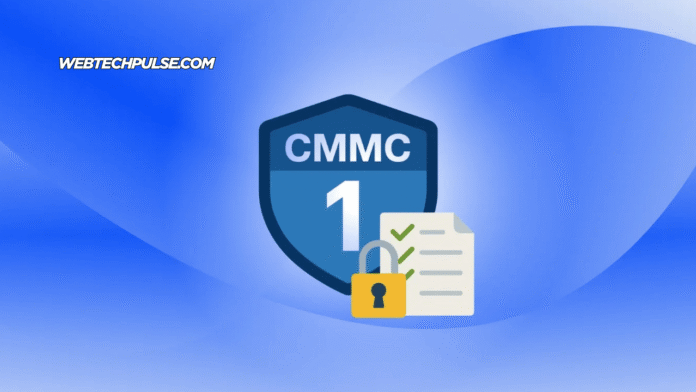Protecting government data isn’t just for massive defense contractors anymore. Small businesses and subcontractors are now held to baseline security standards too. FAR 52.204‑21 outlines exactly what those minimum expectations look like under CMMC Level 1 requirements, and understanding them isn’t just smart—it’s required.
Basic Security Controls Governing Information System Access Under FAR 52.204‑21
At the foundation of any secure system is knowing who gets in and who doesn’t. FAR 52.204‑21 requires access to information systems be limited to authorized users, a policy that protects Federal Contract Information (FCI) from accidental leaks or deliberate threats. These users must have unique credentials and appropriate permissions that reflect their job roles—no shared accounts or blanket access. This policy ensures traceability, a point heavily reviewed during assessments by a c3pao.
Access must be reviewed and updated regularly. Staff changes, internal transfers, or terminated accounts can create security gaps if left unmanaged. Organizations working toward CMMC level 2 compliance often build upon these access rules to create layered security postures, but the principle starts here. With help from a trusted CMMC RPO, businesses can document and enforce logical access policies that meet baseline CMMC compliance requirements without overcomplicating their operations.
Essential Configuration Management Obligations per CMMC Level 1
Configuration management ensures systems remain secure by defining how hardware and software are set up and how they evolve over time. FAR 52.204‑21 expects organizations to install only approved applications, disable unnecessary features, and keep consistent configuration baselines. By reducing unused system functions, companies limit potential vulnerabilities.
Unauthorized changes to a system—whether intentional or accidental—can introduce threats. To stay compliant with CMMC level 1 requirements, businesses must monitor configuration settings and restrict access to those who manage IT infrastructure. Documenting each change, especially on systems that touch FCI, becomes a critical step in proving compliance during a c3pao review. Early alignment with a CMMC RPO can make the difference between secure consistency and unnoticed misconfigurations.
FAR 52.204‑21 Driven System Audit and Accountability Fundamentals
Understanding what’s happening inside a system matters just as much as protecting its perimeter. FAR 52.204‑21 mandates that organizations retain the ability to audit user activity and maintain records that track system use. These logs must capture actions such as login attempts, file access, and system modifications. It’s not enough to trust users—systems should prove how they’re used.
These audit trails help organizations detect unusual activity quickly, giving them a head start on response. For companies aiming toward CMMC level 2 requirements, this visibility forms the baseline for more advanced threat detection capabilities. To stay on track, audit logs must be protected from tampering and retained for a defined period. Partnering with a knowledgeable CMMC RPO can help map out efficient audit procedures tailored to each organization’s environment.
Core Identification Protocols Critical to Level 1 Security Posture
Identification under CMMC level 1 requirements is more than just usernames—it’s a structured approach to confirming user identity before granting access. FAR 52.204‑21 expects that organizations establish and enforce unique identifiers, often through usernames paired with strong passwords. This system minimizes insider risk by tying system activity directly to an individual user.
In practice, this also means terminating or disabling accounts promptly after employee departures or role changes. Without timely deactivation, those credentials could become a gateway for unauthorized access. While the policies sound simple, execution is where many businesses stumble. Working with a CMMC RPO helps ensure these ID protocols are both enforced and documented, two points that auditors from a c3pao will closely review.
Defined Media Sanitization Practices Specified by FAR 52.204‑21
Whether it’s an old hard drive, USB stick, or printed report, media that stores FCI must be handled with care. FAR 52.204‑21 outlines clear expectations for sanitizing media before disposal or reuse. Simply deleting files isn’t enough—data must be destroyed or overwritten to prevent recovery. This prevents unauthorized access to sensitive information even after it leaves your building.
Physical media should also be tracked, labeled, and restricted to authorized personnel. Companies preparing for CMMC level 2 compliance will find media control policies essential, but at level 1, these basic practices still carry weight. A CMMC RPO can help establish a routine for secure disposal and reuse, making it easier to show auditors a clean and consistent process.
Key Boundary Protection Requirements Integral to CMMC Level 1 Compliance
Protecting your network’s edge—where internal systems meet external networks—is key to keeping threats out. Boundary protection includes firewalls, routers, and filtering tools that control data flow. FAR 52.204‑21 calls for monitoring and restricting traffic based on security rules, a requirement that keeps attackers from slipping through open ports or unsecured services.
These protections must be configured to only allow necessary communication. Systems that send or receive FCI should be separated from less secure networks. For organizations building toward CMMC level 2 requirements, boundary controls become more advanced, but it starts with visibility and restrictions at the entry points. Regular review of firewall settings, aided by a CMMC RPO, ensures these lines stay secure and policy-aligned.
Fundamental Security Awareness Criteria Mandated Under FAR 52.204‑21
Technology only goes so far—humans are still the weakest link. FAR 52.204‑21 requires businesses to ensure that all personnel receive basic training on how to handle FCI securely. This includes spotting phishing emails, understanding device security, and knowing how to report suspicious activity. Without it, technical safeguards fall flat.
This training should be ongoing and part of onboarding for all new hires. Simple, practical sessions—backed by documented attendance—help show auditors that employees understand their roles in meeting CMMC compliance requirements. Companies that work with a certified CMMC RPO can craft custom awareness programs that align with business needs while satisfying CMMC level 1 requirements.












